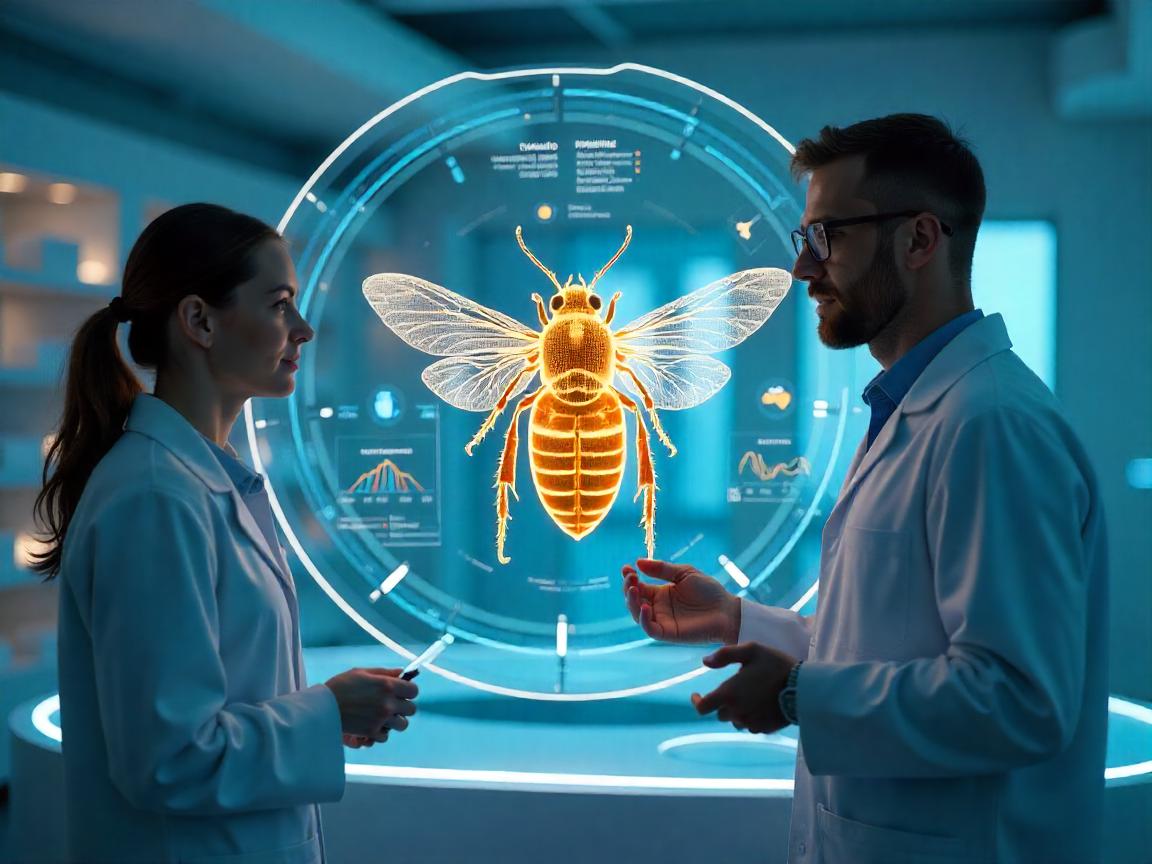
A ring-shaped scientific creation called the Diamond Light Source located in the green fields of Oxfordshire practices quiet research that alters our perspectives on natural world phenomena particularly through microscopic creatures. Insects. These minuscule creatures remain puzzling even for established scientists as well as tireless and complex. The scientific world had long struggled to observe tiny structures present in parasitoids’ ovipositors and compound eyes because such things remained out of their reach until recently. The use of high-resolution synchrotron imaging technology gives a clear view of hidden layers which reshapes classifications reveals hidden lifeforms and provides insights regarding evolutionary changes due to climate.
Scientists have potentially misidentified half of the recorded bugs which were studied during past decades. The possibility exists that an ordinary house beetle on your porch holds vital keys toward climate adaptability and biological engineering solutions along with solutions to future food shortages.
The Synchrotron Revolution: From Microns to Masterpieces
The synchrotron machine surpasses typical laboratory equipment to become the amplified version of a powerful microscope. The 561-meter loop at Diamond allows electrons to shift at near-light speed which generates X-ray beams capable of penetrating both bone and stone structures along with insect exoskeletons. A distinguishing characteristic of this technology allows experts to visualize 3D internal structures of samples without causing any harm to the specimens. This breakthrough exceeds the capabilities of traditional laboratory practices such as dissection because it avoids sample destruction that can result from the requirements of electron or electron microscope procedures.
Scientists at the Natural History Museum collaboratively with Oxford University used this technology on buried midges trapped in amber alongside living bee species for their analyses. A team of entomologists published findings about a soldier fly fossil in Royal Society Open Science which revealed a new abdominal spine leading to alteration of the species phylogenetic position. The study dated back to 48 million years ago. This historical dust mite has spent millennia preserved in amber while transforming the course of its species lineages.
Scientific discoveries regarding hidden insect characteristics help researchers to redefine insect taxonomy.
The classification of insects has historically been both an artistic process together with an element of scientist conjecture. External specimen similarity is now challenged by synchrotron scanning techniques which show internal organs such as musculature and tracheal systems and reproductive anatomy resulting in major classification changes. The anatomical variations detected through 2025 joint Cambridge and Diamond Facility research on Megaselia scalaris flies tempted experts to reclassify the group into three distinct species.
This isn’t just academic cleanup. Numbered misidentifications of pollinators as pests end in impaired conservation practices and agricultural design flaws. Protecting an incorrect bee species becomes possible if three different species are grouped under a single defensive classification. Dr. Helena Crowther from the UK warned readers of The Guardian during last month that synchrotron imaging methods help fix decades of confusion about species while revealing the alarming level of uncharted territory regarding knowledge about insects.
Climate Clues in Cuticle and Wing: Insects as Bioindicators
The insect community functions as a collective barometer which responds sensitively to all types of environmental changes. The change in body dimensions along with weakened exoskeletons reveals information about temperature increases together with alterations in rain levels and chemical pollutants. The micro-level alterations become observable through synchrotron technology which produces outstanding clarity.
Scientists studied UK bumblebee populations of Bombus terrestris through a recent long-term observation. A synchrotron imaging analysis between bees from 1985 and 2023 showed the cuticle cuticle decreased by 12% and wings had 9% reduced robustness in 2023 specimens compared to 1985 counterparts. bbcearth.report (2024) stated that bumblebee body changes stemmed from elevated pesticide exposures while facing habitat challenges apart from natural genetic adaptations. Research about modern agriculture shows it actively modifies insect body structure in present time which threatens insect survival.
Alternative opportunities emerge within the field of paleoentomology because of these developments. The analysis of fossilized insects establishes a base for researchers to evaluate prior survival strategies which allows them to predict future biodiversity reductions.
The Beauty Behind the Buzz: Personal Encounters That Changed Minds
I maintained an opinion that bugs existed only as background elements in life. A science open day at Diamond became my first experience at this site during 2023. The display included a real-time 3D computer model of a jewel wasp. The mechanical sculpture appearance displayed a descending ovipositor structure which drilled like a corkscrew while its wing veins showed intricate fractal patterns. The high degree of detail in this discovery made something shift. Suddenly, insects weren’t pests. They were masterpieces of micro-evolution.
This transition is taking place across all domains. The scientific community uses 3D-printed insect models created from scan data to allow the public to explore what was previously beyond human perception. Classroom instruction enables teachers to use animated reconstructions for explaining biodiversity concepts to students. The scans are now used by bioengineers to create models for micro-drones which Wired UK reported in December.
Conclusion: What the Smallest Creatures Can Teach Us
History shows that our most significant planet-based discoveries originate from those organisms that humans tend to overlook. Insects which receive little attention receive fatal treatment at hands of people and scientists are providing essential understandings about our biodiversity destruction and climate situation as well as scientific gaps in knowledge. We have achieved the ability to listen through synchrotron imaging.
Technology serves as only one element when exploring this issue. The important thing stands as our reaction to these revelations. Should conservation policy evolution occur through analysis of insect records obtained through new discoveries? The funding of public access archives should be established to provide equal research opportunities for academics in the Global South. When educating our children will we guide them to observe closely instead of using inappropriate destruction?
The whole matter exceeds the elevation of insect subject matter. Our ability to value discoveries determines our willingness to take action based on their findings despite the size of the messenger.